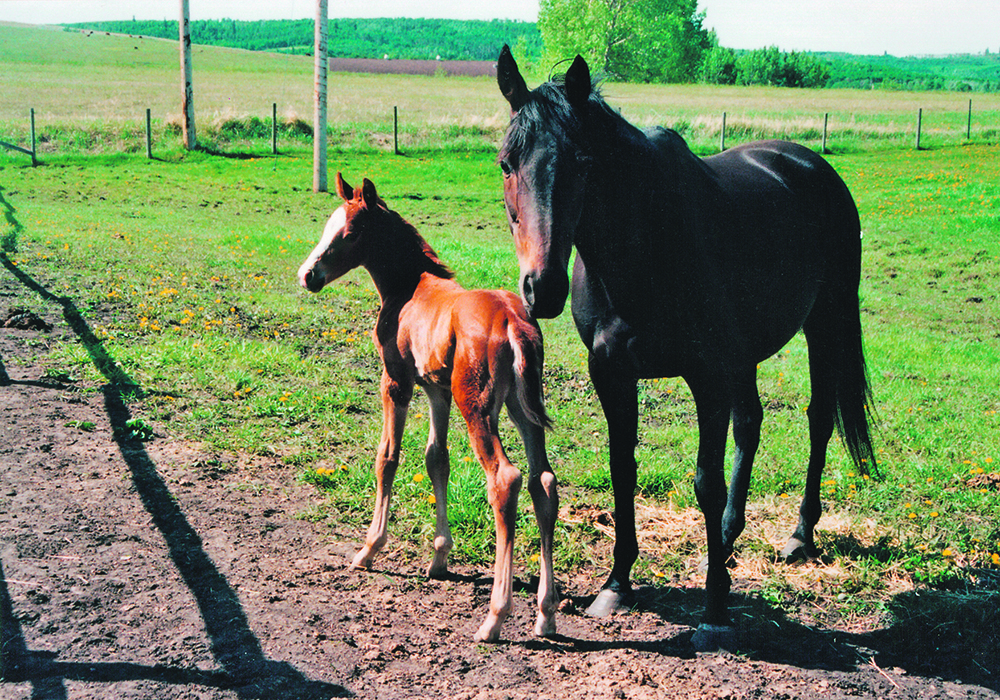Forming the important and intimate connection between the fetus and pregnant female, placentas provide critical functions, including hormone production and the exchange of gases, nutrients and waste.
The placenta can also be the site of dysfunction and disease, leading to abortion, stillbirths and neonatal death in farm animal species.
Abnormal development of placentas probably contributes to early pregnancy loss in domestic animals, but these are unlikely to be recognized or diagnosed. Abnormal placentas seem to occur more frequently in cloned cattle and sheep. But these niche animals are expensive to produce and are likely carefully monitored by their caretakers, particularly in research settings, making detection of these issues more probable.
Read Also

Feds propose overhaul of chronic wasting disease control program
Chronic Wasting disease control program getting updated by Canadian Food Inspection Agency with feedback encouraged from producers.
In horses, there are a few common developmental issues with placentas that can affect a mare’s ability to produce a live foal. Some fetuses develop excessively long umbilical cords that are prone to extreme twisting. This cuts off the vital supply of blood from the placenta to the fetus and can cause abortions.
Twin pregnancies in horses rarely survive and usually end in abortion of both fetuses. It is thought that the placenta cannot support the demands of two foals at the same time. The placenta of some mares will separate too early, leading to a red bag presenting during birth instead of the normal white-coloured membrane.
This separation occurs in response to fescue toxicity, some placental infections and also stressful events. It is life-threatening for the foal because it can no longer get oxygen from the placenta and requires immediate intervention.
After the birth, the placenta needs to detach from the uterine lining and exit the body. When this doesn’t occur within a few hours, it is considered a retained placenta. The reasons for retained placentas include infections of the fetus or placenta, nutritional imbalances, older dams and birthing difficulties.
In cattle, retained placentas may resolve without intervention or could progress to severe infection, necessitating treatment. In severe cases, infection can spread beyond the uterus to other organs and is associated with mastitis (inflammation of the mammary glands), displaced stomach and ketosis. In mares, retained placentas are a serious concern and can lead to uterine inflammation, systemic bacterial infections and founder. Pulling on the membranes is not recommended. Treatment usually includes oxytocin and antibiotics if indicated.
Infection and inflammation of the placenta is called placentitis. This condition is an unfortunately frequent cause of reproductive disease.
Pathogens that infect the placenta include bacteria and fungi. These can reach the placenta by ascending up the female reproductive tract and also through the blood. A variety of bacterial species cause placentitis, including those that are normally found on the skin of healthy animals and fecal bacteria.
These pathogens likely gain entry through contamination of the vagina and travel up through the cervix and into the uterus before spreading to the placenta.
Fungi that are ingested or inhaled can spread through the blood to the placenta. Both fungal and bacterial-infected placentas are thickened by edema fluid, pus and tissue debris. The infection compromises their ability to support the fetus and can cause abortion.
There are also infections that pass through the protective barrier of the placenta and directly infect fetuses. This is common with viral pathogens. They are very small and readily spread via blood throughout the body, including the placenta and from there, into the fetus.
Bovine viral diarrhea (BVD) is a common example of a virus that gets through the placenta. The effects of the virus depend on the fetus’s age and can include pregnancy loss, poor-doing calves, congenital abnormalities such as abnormal brain and eye development, and persistent infections.
In health, the placenta does the incredible task of supporting fetal development. But when abnormalities or disease occur in this organ, pregnancy loss or poor-doing offspring are the result.
Dr. Jamie Rothenburger, DVM, MVetSc, PhD, DACVP, is a veterinarian who practices pathology and is an assistant professor at the University of Calgary’s Faculty of Veterinary Medicine. Twitter: @JRothenburger















